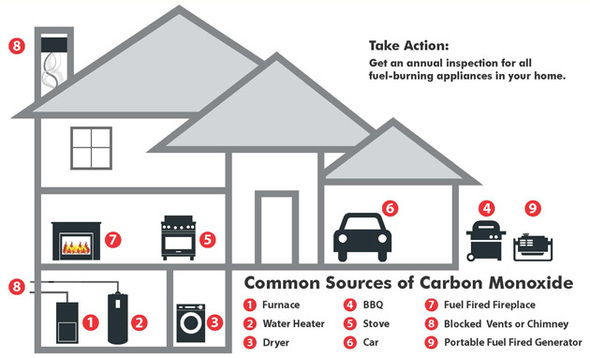Did you know…? As of January 1, 2007, homeowners, landlords, and building owners are required to install carbon monoxide (CO) detectors within 15 feet of rooms used for sleeping. This law applies only to those occupancies that use fossil fuel to cook, heat, or produce hot water, or occupancies that are connected to an enclosed garage.
Carbon monoxide alarms are a simple tool to help identify dangerous levels of the deadly gas and can save an entire family from getting hurt or even killed. If you don’t have an alarm in your home, we strongly encourage you to pick one up and install it immediately. It can save your life, and the lives of the ones you love.
Carbon monoxide is a colorless, odorless, tasteless gas produced by burning gasoline, wood, propane, charcoal or other fuel. Improperly ventilated appliances and engines, particularly in a tightly sealed or enclosed space, may allow carbon monoxide to accumulate to dangerous levels.
Carbon monoxide poisoning occurs when carbon monoxide builds up in your bloodstream. When too much carbon monoxide is in the air, your body replaces the oxygen in your red blood cells with carbon monoxide. This can lead to serious tissue damage, or even death.
If you think you or someone you’re with may have carbon monoxide poisoning, get into fresh air and seek emergency medical care. Call 9-1-1.
Symptoms
Signs and symptoms of carbon monoxide poisoning may include:
- Dull headache
- Weakness
- Dizziness
- Nausea or vomiting
- Shortness of breath
- Confusion
- Blurred vision
- Loss of consciousness

Safety Tips:
Keep your fuel-burning appliances properly vented.
Install carbon monoxide detectors.
Make sure your appliances are serviced by a professional once a year.
